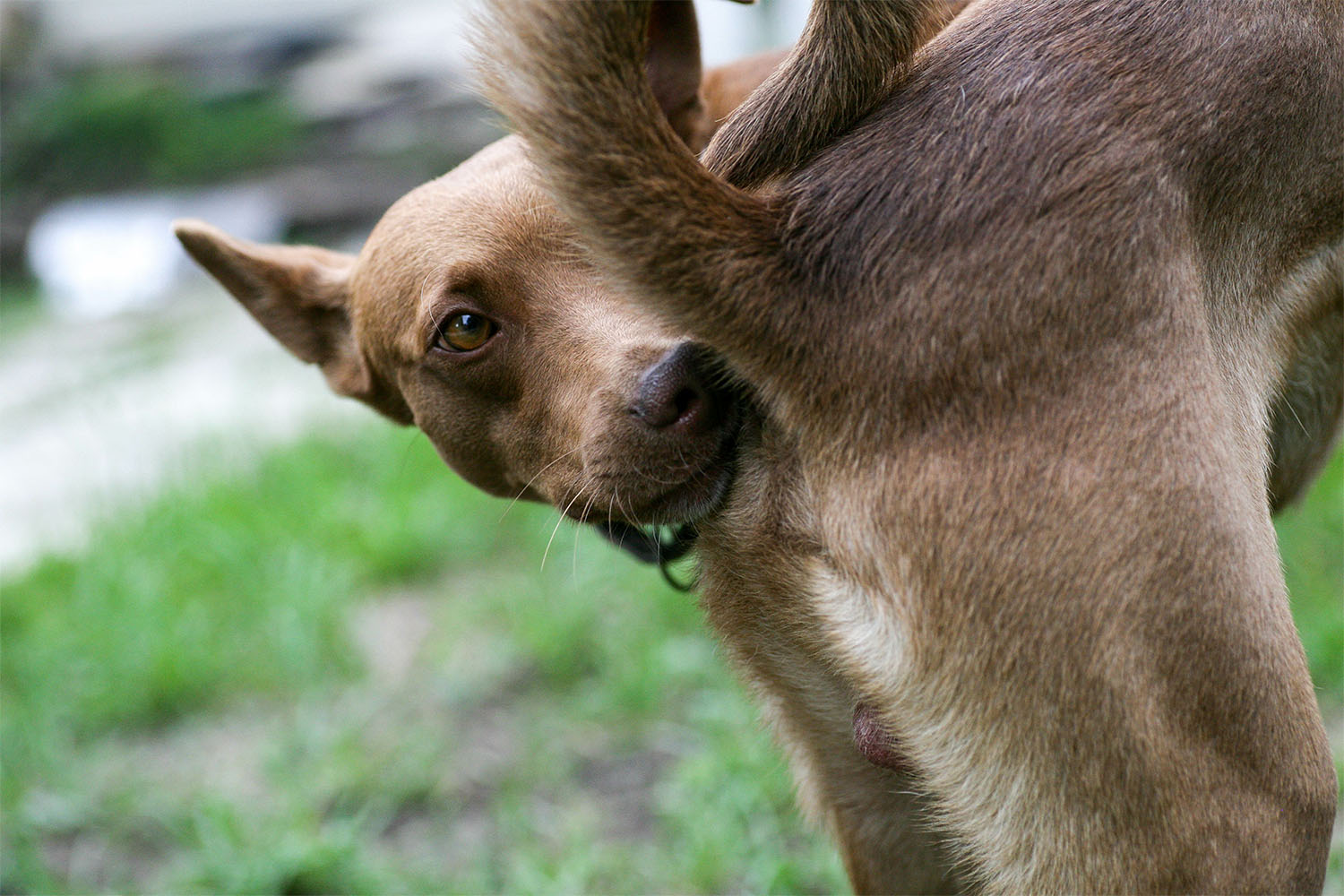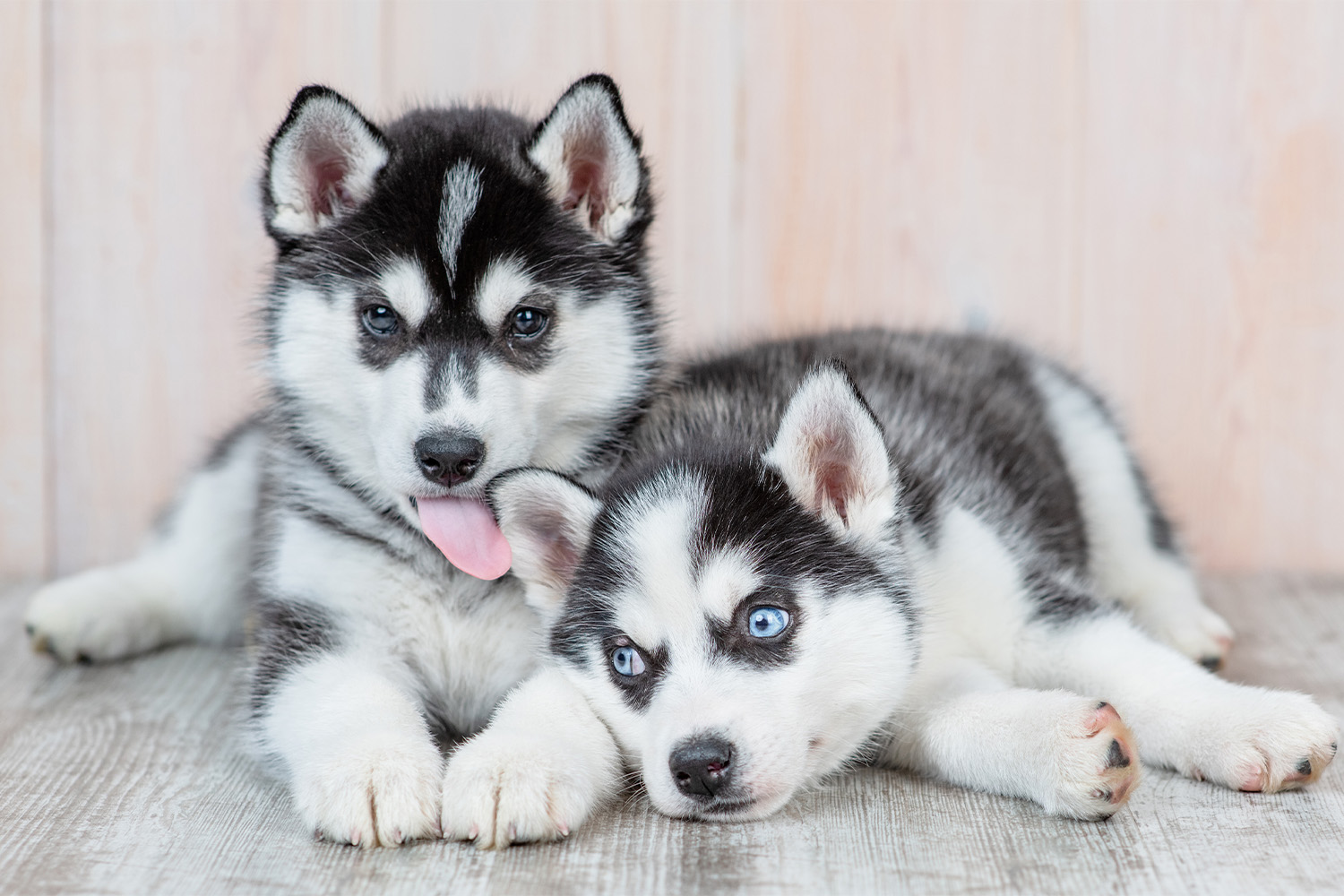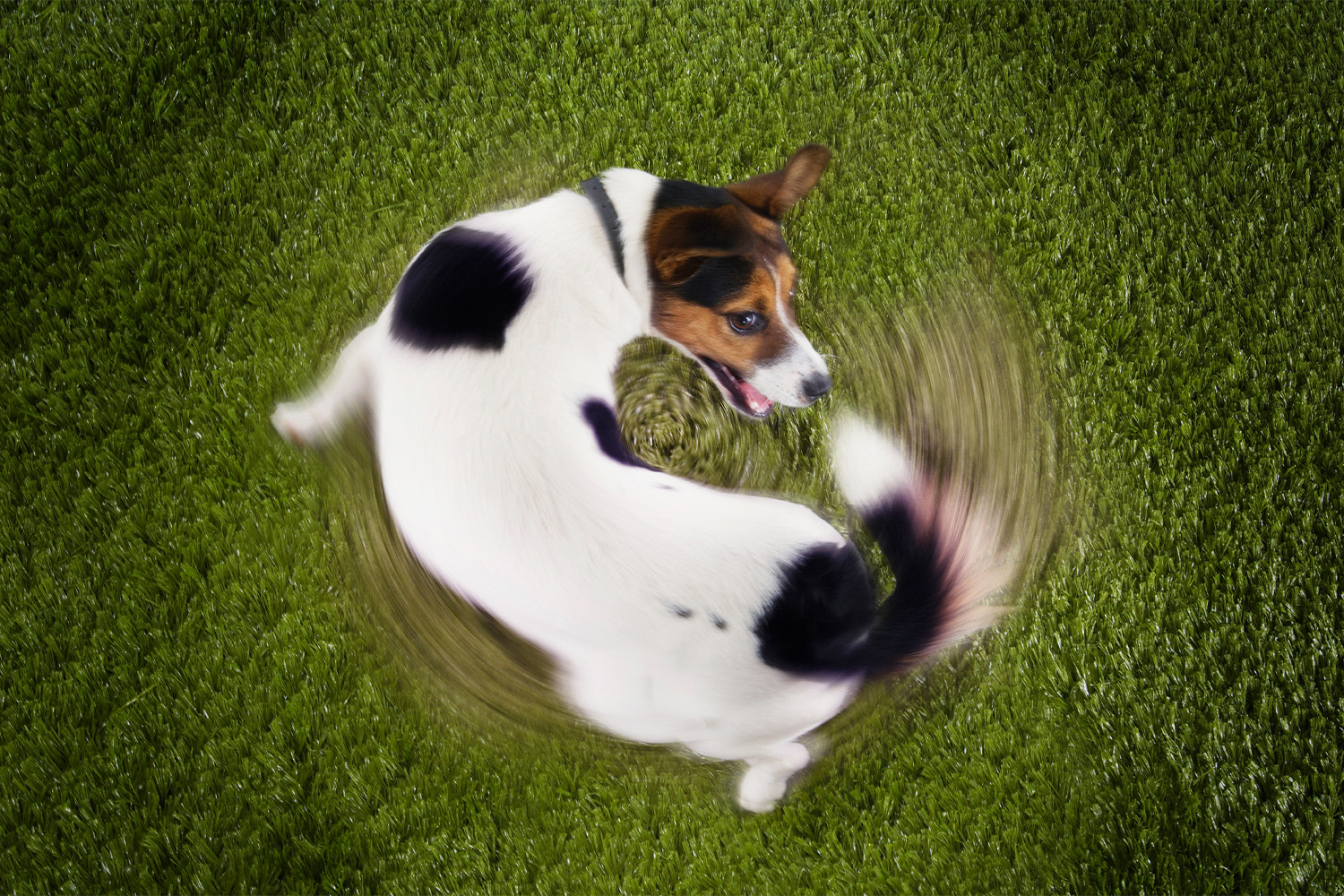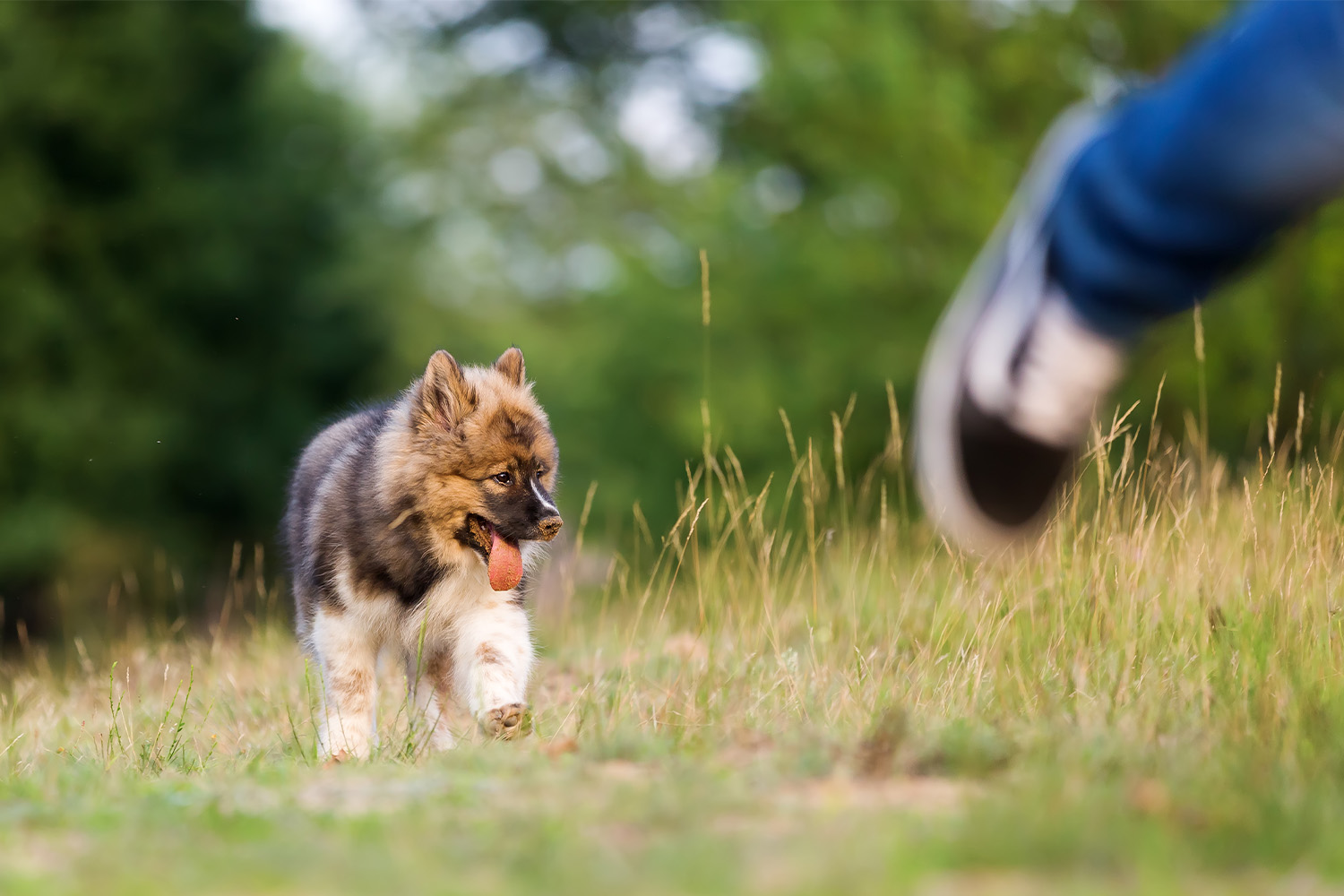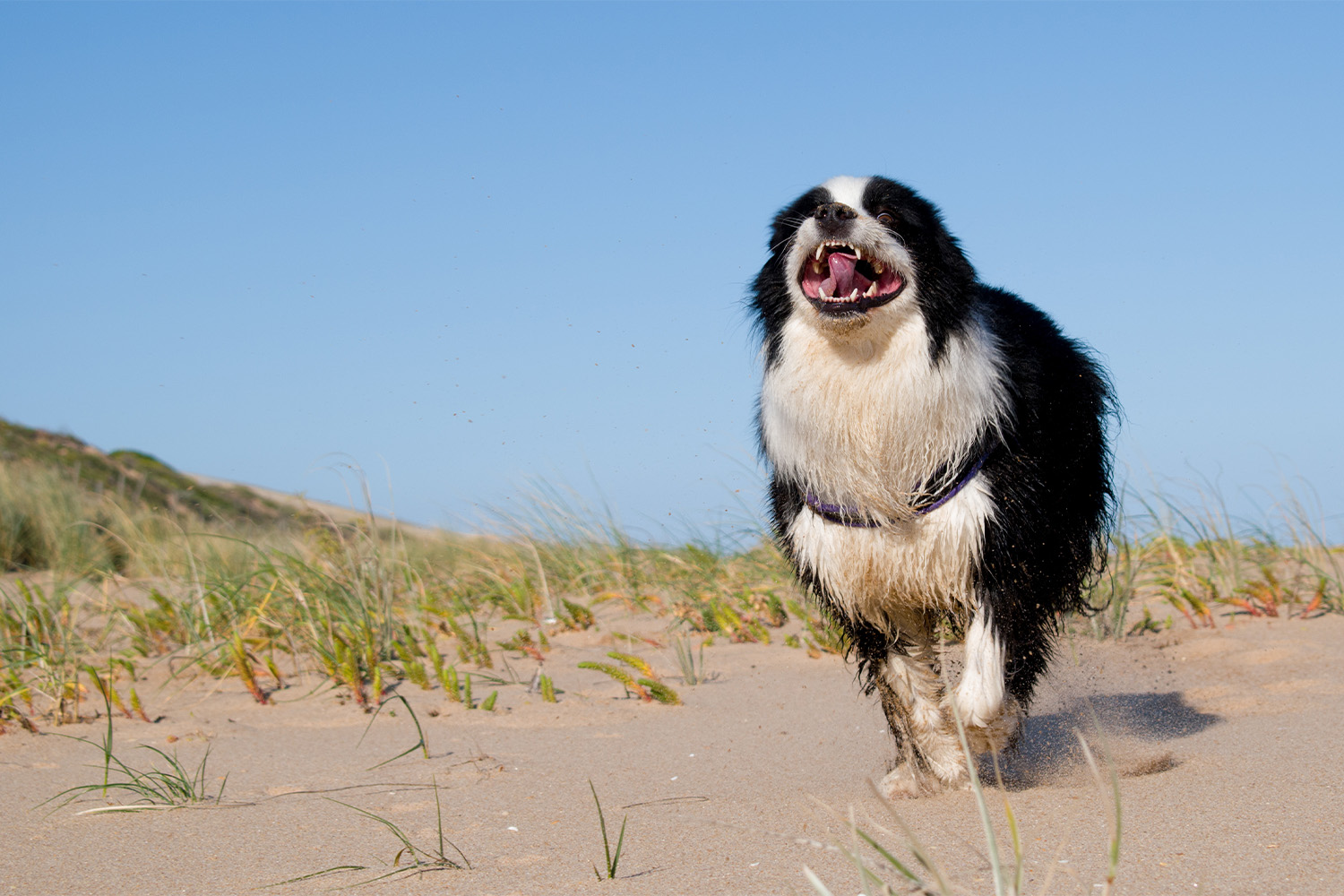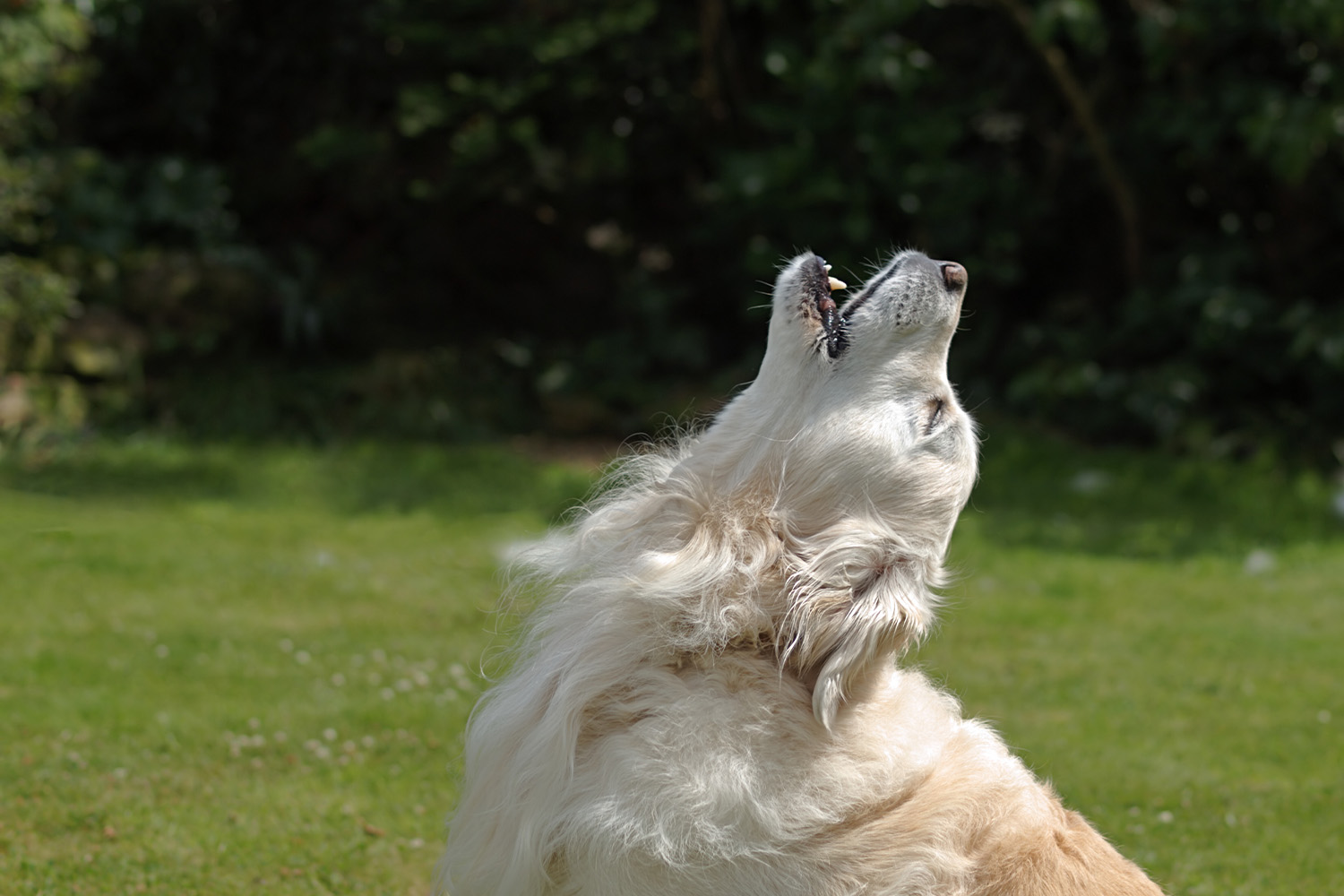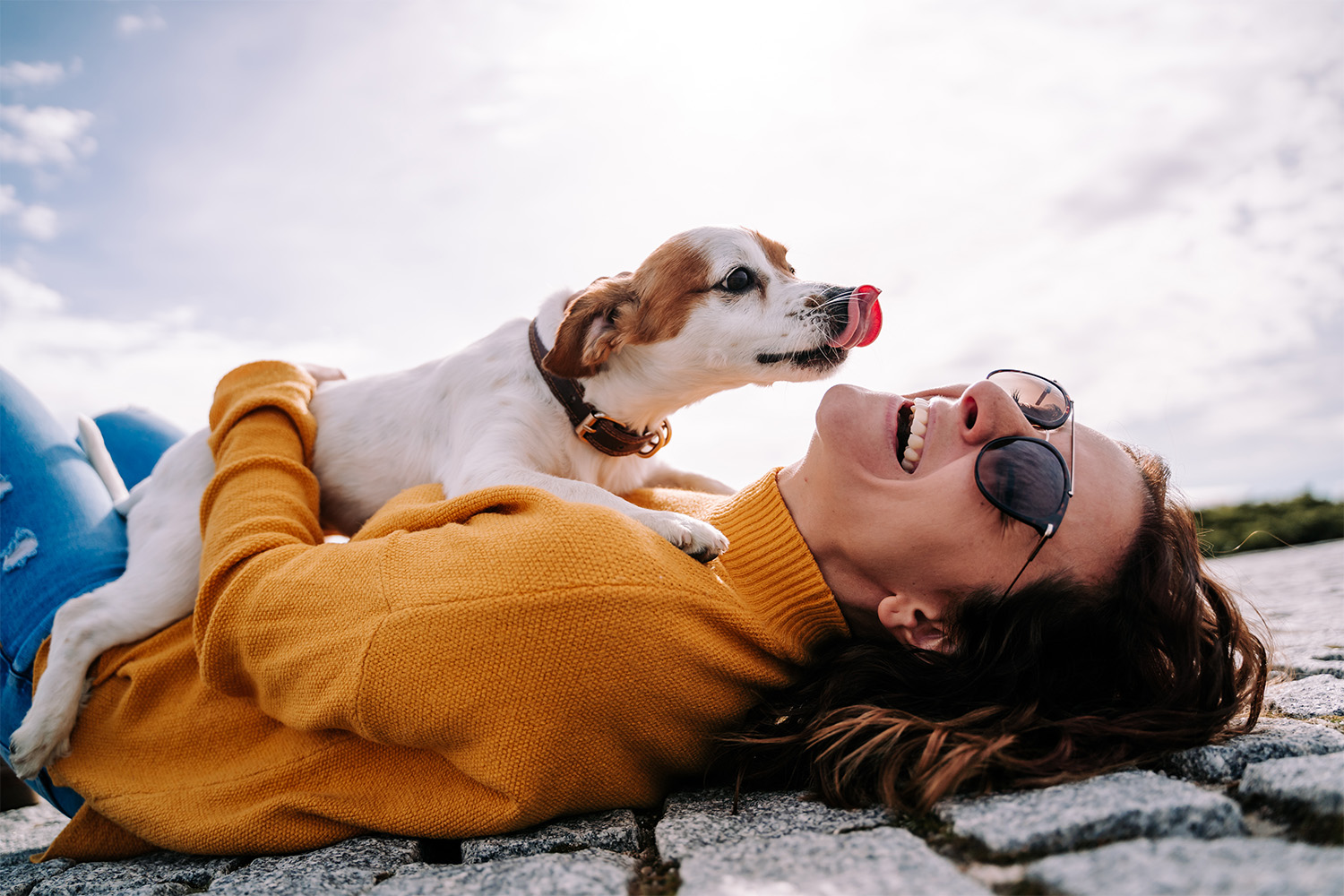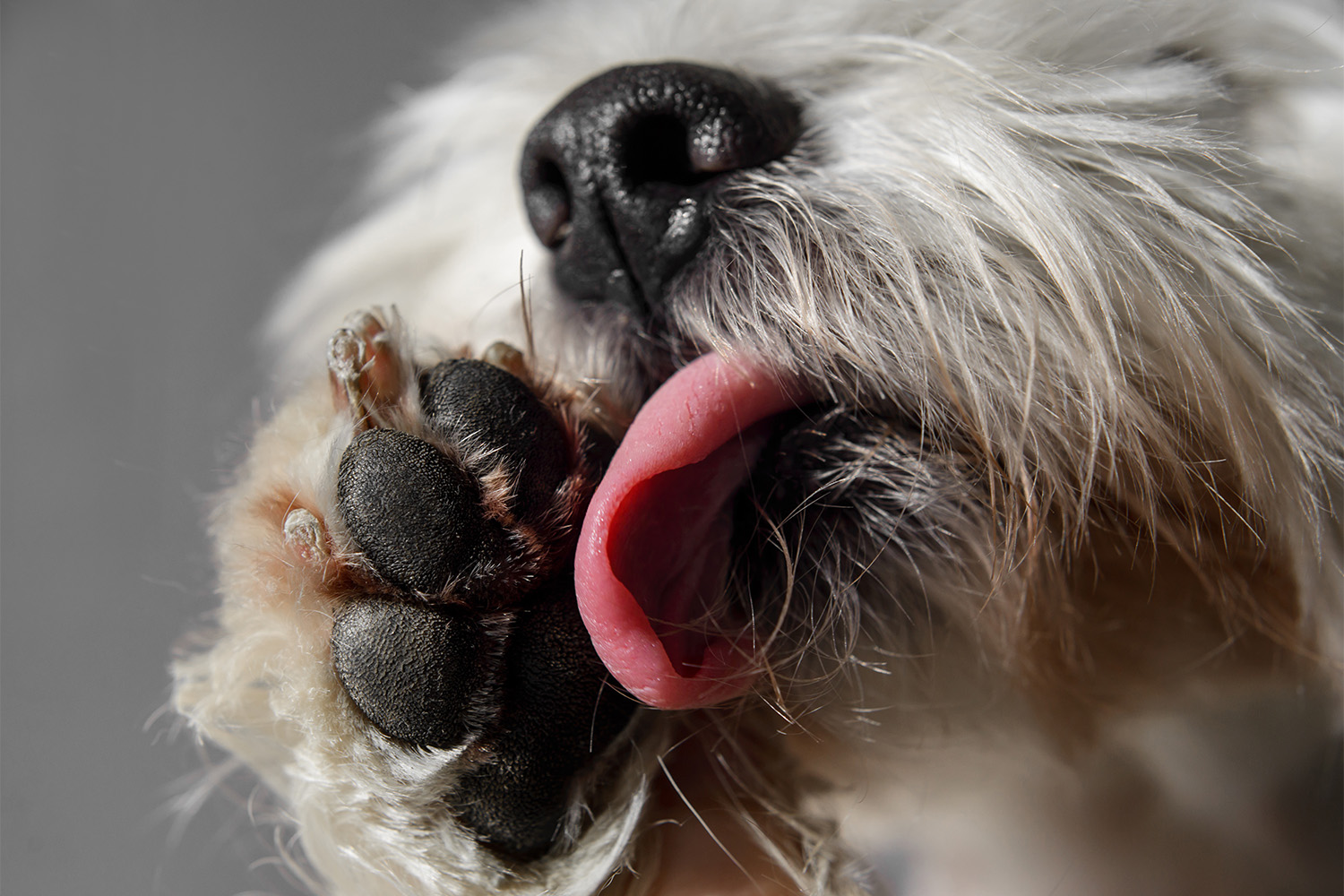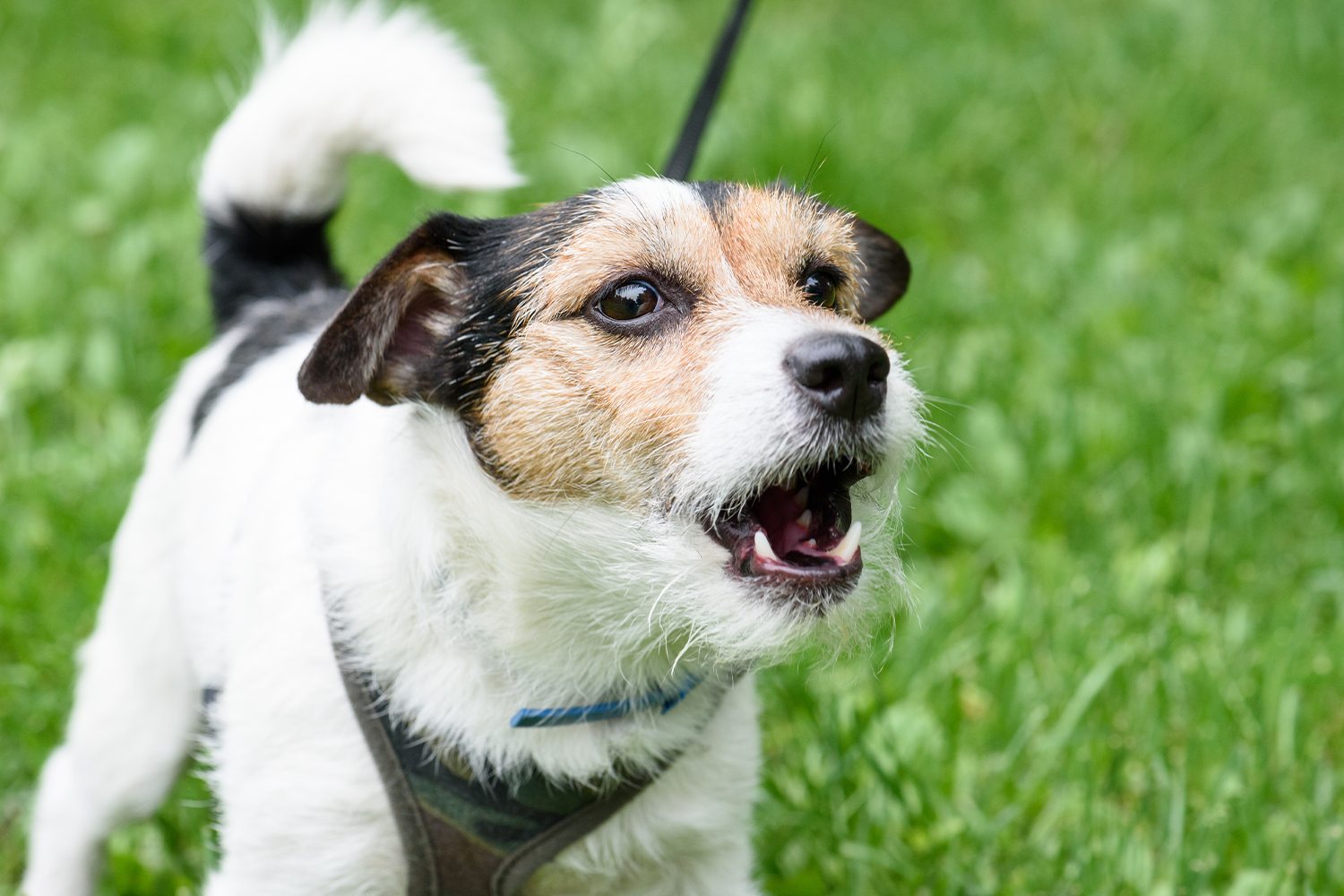Does your dog like to make sure everyone around them knows they are there with loud, incessant barking? How about when the doorbell rings on the TV or whenever someone comes to your actual door? As much as you love your dog, this behavior is not always wanted.
[To all dogs: we get it. A stranger is a stranger is a stranger. But not every stranger is an enemy!]
Training dogs about the appropriate times to bark will save your eardrums a whole lot of pain and will help you and your home seem more inviting. Whether your dog is in their golden years or in puppyhood with bundles of energy, you can guide their behavior in a variety of situations.
Keep reading to learn more about why dogs bark.
Why Do Dogs Bark? The Different Types of Barking
Barking is a natural behavior that all dogs do — as dog parents everywhere know. When, where, and directed at who is a different question. Regardless, your dog might be one to utilize their voice more than others. You know your dog best, so you will likely be able to pick up on what kind of barking your dog is doing.
There are many types of barking: alert/alarm barking, demand barking, frustration barking, boredom barking, stress barking, play barking, and greeting barking. Additionally, dogs can bark out of a lack of socialization.
Recognizing what kind of barking your dog is doing could help you to examine the situation and know how best to respond to it.
Alert/Alarm Barking
Does your dog bark from the window or porch whenever a stranger or new dog walks onto their property? Do they tense up, hair raised on their backs, with more stiffness in their body language than you are used to?
This aspect of your dog’s behavior could be due to your dog feeling like they need to protect their territory and make their presence known. They might also be trying to get another dog’s attention.
You don’t want your dog to perceive every person or dog that walks by or comes to your door as a threat — especially if you live in a very social and busy setting or have friends and family who frequently stop by. You don’t want the neighbors to start complaining because your dog is ready to yell at anyone who dares enter their domain.
Having a self-appointed guard dog can have its pros, but only if that is what you are seeking. If you’re reading this, you’re likely not interested in having a guard dog and want to learn how to curb the behavior while also teaching them how to trust.
Excitement
When dogs see other dogs and family members, they might bark out of pure excitement. Many barking dogs are not trying to be threatening or dangerous but instead extremely excited.
Note that not all people or other dogs want to approach a dog who is barking at them, regardless of how friendly the barking is intended to be. Your dog might find they are having trouble making friends when on their morning walks, and barking might be to blame.
Many puppies display this behavior of extreme excitement that they can’t understand how to contain. Puppies learn to communicate through their barks and wines with their siblings and mother.
It’s also a way that they communicate with their new human parents when they first arrive. While it is adorable to hear their tiny baby barks, if you don’t correct the behavior early, you could find it more challenging to do as they form their own barking habits.
Stress Barking
Some dogs might bark out of fear, and there are likely underlying causes for this. Some rescued dogs from not-so-great backgrounds might be more anxious and nervous, becoming scared more quickly when they see strangers or hear loud noises.
Some of this extra fear could be due to separation anxiety or an increased attunement to potential threats. While this bark is unlikely to be aggressive, it could lead to that if a dog feels the need to protect themselves. This kind of bark is more likely to be used to make the dog seem bigger and hope to scare the threat away.
Fear-induced barking can also be a result of a lack of socialization. If you get your dog when they are a puppy, it’s so important to socialize them with a variety of different people and dogs so that they can learn to be unfased in new situations.
New situations can be unsettling for dogs and can therefore lead to barking. So it’s no surprise that a dog that hasn’t been in many social settings would find the existence of other people and dogs startling.
Obedience Training Techniques To Remember
Before we get into some of the methods to stop dog barking, we have a few tips to share:
If you have a puppy, know that starting as early as possible can only benefit you. Regardless of age or background, patience is essential. Our dogs will learn to trust that we won’t put them in dangerous scenarios and will begin to open up.
Redirection Will Be Key
If you can figure out ways to keep your dog distracted and engrossed in a toy or game, barking out of boredom is unlikely to occur in the first place. They might end up barking at a toy or at you when you come to play, but if they are paying attention to the toy, they aren’t thinking about barking.
Ideally, you want to redirect them from practicing the act of attention-seeking barking or barking out of boredom so that it doesn’t become a habitual thing for them. However, some forms of barking — barking to be let out, for example — can be beneficial. Thus, it’s not recommended to train your dog out of barking in any and all circumstances. Instead, it’s ideal to redirect your dog’s attention away from something that shouldn’t warrant barking.
Remove the Motivation To Bark
Dogs that like to bark at people who walk by from the safety of a window might need to be cut off from window lurking. Closing curtains or making it more difficult for your dog to watch out of the windows eliminates the need for barking. Your dog can’t see the stimulus they are looking for and, therefore, won’t react to it.
After a while, your dog might not consider barking as something they need to do. They might huff and puff occasionally when a stranger approaches. But because they’ve never been allowed to bark non-stop at a person, they won’t think to do it when they make eye contact with a passerby in the future.
Ignore the Barking
This can be tough, especially on days you come home from work and want to relax, but try ignoring the barking. If your dog is staring at you barking, they clearly want your attention, but you shouldn’t reward them for the behavior by giving them what they want.
This goes for crate training too. You don’t need to coddle your dog every time they cry or bark from their crate. Instead, you can work to teach them that being quiet gets rewarded and barking doesn’t — the powers of positive reinforcement.
Give them a treat every time they are quiet in their crate. Ignore them while they bark, and if they quiet down for even a split second, come over and hand them a treat.
Desensitization to Triggers
If there is a specific person, dog, or object that your dog is barking at, you want to desensitize them to it.
Let your dog become accustomed to the trigger on their own terms. At first, the trigger should stay at a far-away distance. When dogs no longer feel threatened, up-close triggers can offer high-value treats. This teaches dogs the lesson that triggers lied to high-value items, and if not, at least they are generally harmless.
Reward them with treats when they don’t bark, and if they do bark, move further away until they stop and reward them again. This may take many days or weeks to accomplish, but baby (or puppy) steps are still steps.
Simple Ways To Teach Your Dog Not To Bark
There are a few different methods that teach your dog how to not bark. These are not something that your dog will master overnight (at least the majority of them won’t), so don’t be discouraged!
1. The Quiet Method
When your dog is barking at the mailman or another dog passing by, interrupt them with a click of your tongue or another similar noise. When they respond to the noise, tell them the command: “Quiet.” Don’t yell at them or even raise your voice a tiny bit. Instead, tell them quietly to be quiet.
Once you’ve done this, reinforce their behavior with a treat. If they remain quiet, you can reinforce with another treat. If they bark, repeat the same action.
Make sure to reward them each time that they are quiet so they begin to see the correlation between being quiet and getting a treat. In order for them to understand that “Quiet” is the command, begin waiting for longer periods of time to reward them once they are quiet. You might start rewarding them immediately after at first, but the verbal cue might not be fully understood yet.
Give them the command. Once they go quiet, wait for five seconds before rewarding, then ten seconds, then 20 seconds. See if they can stay quiet for as long as possible but only reward them when they remain quiet.
2. Distraction Method
If there is a noise or object that your dog is obsessed with or intrigued by, use that to distract your dog when they bark. It should be that the sound or object they see is more interesting to them than a stranger is. Once their attention is on you, you can tell them to sit or lie down and reward them with a treat.
If their eyes begin to wander, keep them preoccupied with the distraction and reward them if they look back at you. If they bark, repeat the same process. This should teach them that barking doesn’t produce a reward but paying attention to their human does.
3. The “Spot” Method
When new people come into your home, your dog might not know the proper etiquette for greeting behaviors. They might bark because a stranger in their home, or they may bark and jump because they are happy to see someone coming in.
Either way, you don’t want your dog bombarding your guests as soon as they enter. By teaching your dog to go to a specific spot in your house, you can hopefully teach them that when someone comes in, rather than barking, they can be rewarded for calmly waiting.
Start by saying, “Go to your spot,” and tossing a treat wherever that may be. It might be the couch, their dog bed, or settling down next to the living room couch.
Repeat this several times until your dog starts moving to the spot instinctively to receive the treat. Practice doing this from all over your house so that they understand there is a specific place they should be going to each time, and they’ll only get rewarded if they do it right.
4. Divert Attention in Public
Dogs can get really excited, but it’s not always manageable. As your dog grows larger and stronger, the more excitable they get out in public, the more tricky it is to control them.
When your dog notices a stranger or other dog, they may instantly become alert. You will want to turn them away from the person or dog and have them focus on you. As long as your dog doesn’t bark or engage, make sure to give them plenty of well-deserved treats.
Not only will they see that barking is not rewarded, but it also teaches them that when they bark, they don’t get to go say hi to the person they saw. If your dog wants to interact with a human or another dog, they need to do it in a respectful way!
Something Smart To Bark About
Training dogs can sometimes be challenging — which is why experts are here to help.
Sign up for a virtual session with AskVet and gain access to chat with our Certified Pet Lifestyle Coaches (CPLCs), who can help craft a personalized behavioral plan for your pet. Questions may arise at any given time during your training process, and having access to our CPLCs makes getting answers easier. Plus, with your AskVet account, you can chat with a vet 24/7 on the mobile app!
Sources:
How To Get Your Dog To Stop Barking | Humane Society
Decoding Your Dog’s Excessive Barking | Veterinary Medicine at Illinois
Improving Dog Training Methods: Efficacy And Efficiency Of Reward And Mixed Training Methods | NCBI
Helping dog anxiety | The Humane Society of the United States
How to Teach Your Dog to Ring a Bell to Go Outside | AKC
FEARFULNESS AROUND STRANGERS | Richmond SPCA

